Journal Description
Polymers
Polymers
is an international, peer-reviewed, open access journal of polymer science published semimonthly online by MDPI. Belgian Polymer Group (BPG), European Colloid & Interface Society (ECIS), National Interuniversity Consortium of Materials Science and Technology (INSTM) and North American Thermal Analysis Society (NATAS) are affiliated with Polymers and their members receive a discount on the article processing charges.
- Open Access— free for readers, with article processing charges (APC) paid by authors or their institutions.
- High Visibility: indexed within Scopus, SCIE (Web of Science), Ei Compendex, PubMed, PMC, FSTA, CAPlus / SciFinder, Inspec, and other databases.
- Journal Rank: JCR - Q1 (Polymer Science) / CiteScore - Q1 (General Chemistry & Polymers and Plastics)
- Rapid Publication: manuscripts are peer-reviewed and a first decision is provided to authors approximately 14.5 days after submission; acceptance to publication is undertaken in 2.6 days (median values for papers published in this journal in the second half of 2024).
- Recognition of Reviewers: reviewers who provide timely, thorough peer-review reports receive vouchers entitling them to a discount on the APC of their next publication in MDPI journals, in appreciation of the work.
- Testimonials: See what our authors and editors say about Polymers.
Impact Factor:
4.7 (2023);
5-Year Impact Factor:
4.9 (2023)
Latest Articles
Poly(propylene fumarate) Composite Scaffolds for Bone Tissue Engineering: Innovation in Fabrication Techniques and Artificial Intelligence Integration
Polymers 2025, 17(9), 1212; https://doi.org/10.3390/polym17091212 (registering DOI) - 28 Apr 2025
Abstract
Over the past three decades, the biodegradable polymer known as poly(propylene fumarate) (PPF) has been the subject of numerous research due to its unique properties. Its biocompatibility and controllable mechanical properties have encouraged numerous scientists to manufacture and produce a wide range of
[...] Read more.
Over the past three decades, the biodegradable polymer known as poly(propylene fumarate) (PPF) has been the subject of numerous research due to its unique properties. Its biocompatibility and controllable mechanical properties have encouraged numerous scientists to manufacture and produce a wide range of PPF-based materials for biomedical purposes. Additionally, the ability to tailor the degradation rate of the scaffold material to match the rate of new bone tissue formation is particularly relevant in bone tissue engineering, where synchronized degradation and tissue regeneration are critical for effective healing. This review thoroughly summarizes the advancements in different approaches for PPF and PPF-based composite scaffold preparation for bone tissue engineering. Additionally, the challenges faced by each approach, such as biocompatibility, degradation, mechanical features, and crosslinking, were emphasized, and the noteworthy benefits of the most pertinent synthesis strategies were highlighted. Furthermore, the synergistic outcome between tissue engineering and artificial intelligence (AI) was addressed, along with the advantages brought by the implication of machine learning (ML) as well as the revolutionary impact on regenerative medicines. Future advances in bone tissue engineering could be facilitated by the enormous potential for individualized and successful regenerative treatments that arise from the combination of tissue engineering and artificial intelligence. By assessing a patient’s reaction to a certain drug and choosing the best course of action depending on the patient’s genetic and clinical characteristics, AI can also assist in the treatment of illnesses. AI is also used in drug research and discovery, target identification, clinical trial design, and predicting the safety and effectiveness of novel medications. Still, there are ethical issues including data protection and the requirement for reliable data management systems. AI adoption in the healthcare sector is expensive, involving staff and facility investments as well as training healthcare professionals on its application.
Full article
(This article belongs to the Special Issue Functional Polymer-Modified Nanocomposites for Tissue Engineering and Biomedical Applications)
►
Show Figures
Open AccessArticle
Chromophore Quench-Labeling for Active Sites Counting in Ti-Based Ziegler–Natta Catalysts
by
Antonio Vittoria, Giuseppe Antinucci, Roberta Cipullo and Vincenzo Busico
Polymers 2025, 17(9), 1211; https://doi.org/10.3390/polym17091211 - 28 Apr 2025
Abstract
Chromophore quench-labeling (CQL) is an elegant and effective method to count the fraction of active metal (x*) in olefin polymerizations mediated by molecular transition metal catalysts. In this study, the method was successfully applied for the first time to a heterogeneous
[...] Read more.
Chromophore quench-labeling (CQL) is an elegant and effective method to count the fraction of active metal (x*) in olefin polymerizations mediated by molecular transition metal catalysts. In this study, the method was successfully applied for the first time to a heterogeneous Ti-based Ziegler–Natta catalyst of industrial relevance. CQL experiments using 1-hexene as the monomer ended up with a value of x* = 0.49 ± 0.09%, close to that measured for the same catalyst in the polymerization of propene under otherwise identical conditions using an alternative quenched flow (QF) approach. We ascribe such a low x* value to the fact that the catalytically active species are transient metastable surface Ti adducts, as proposed in the recent literature.
Full article
(This article belongs to the Section Polymer Chemistry)
Open AccessArticle
Exploring the Relationship Between Stability and Dynamics in Polymer-Based Amorphous Solid Dispersions for Pharmaceutical Applications
by
Emeline Dudognon, Jeanne-Annick Bama and Frédéric Affouard
Polymers 2025, 17(9), 1210; https://doi.org/10.3390/polym17091210 (registering DOI) - 28 Apr 2025
Abstract
Mixing polymeric excipients with drugs in amorphous solid dispersions (ASD) is known to enhance the bioavailability of drugs by inhibiting their recrystallisation. However, the mechanisms underlying stabilisation remain not fully understood. This study aims to improve our understanding of the role of dynamics,
[...] Read more.
Mixing polymeric excipients with drugs in amorphous solid dispersions (ASD) is known to enhance the bioavailability of drugs by inhibiting their recrystallisation. However, the mechanisms underlying stabilisation remain not fully understood. This study aims to improve our understanding of the role of dynamics, particularly the molecular movements that drive instabilities, through investigations of ASD made of Polyvinylpyrrolidone (PVP K12) and a model drug, Terfenadine. The analyses combine temperature modulated differential scanning calorimetry (MDSC) and dielectric relaxation spectroscopy. The results reveal that the produced ASDs are supersaturated with Terfenadine, regardless of the content, and that PVP slows down the dynamics of the blends, limiting the recrystallisation of the drug during heating. Although the ASDs appear homogeneous based on thermal analysis with a single glass transition consistently detected by MDSC, the investigation of the dynamics reveals a dissociation of the main relaxation into two components for PVP contents below 30 wt.%. This dynamic heterogeneity suggests a structural heterogeneity with the coexistence of two amorphous phases of different compositions, each characterised by its own dynamics. The complex evolution of these dynamics under recrystallisation is rationalised by the confrontation with the phase and state diagram of Terfenadine/PVP blends established by MDSC.
Full article
(This article belongs to the Topic Broadband Dielectric Spectroscopy Fundamentals and Applications)
►▼
Show Figures
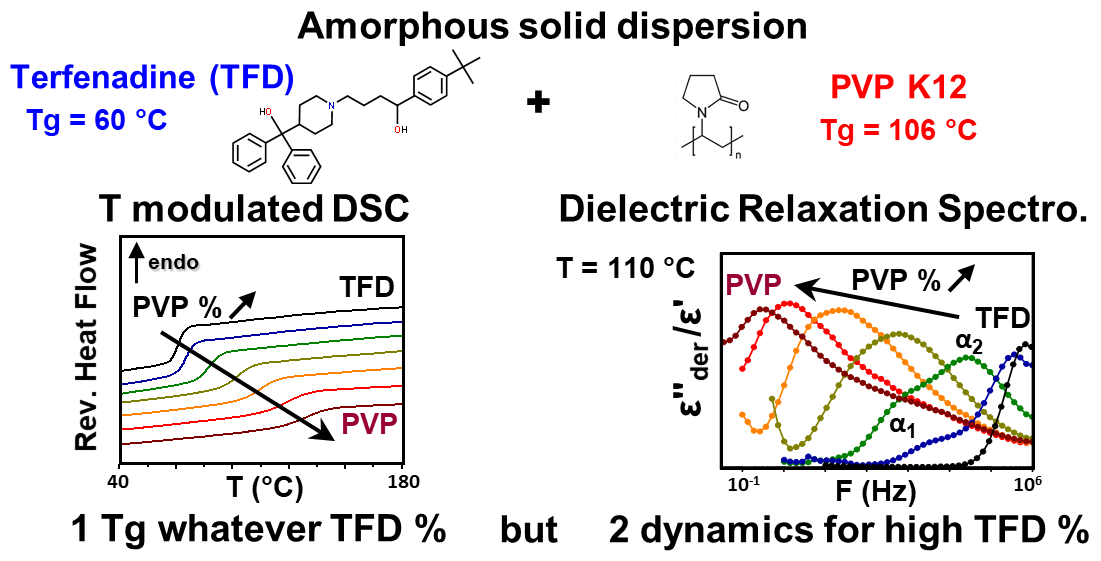
Graphical abstract
Open AccessArticle
Surface Modification of Polydopamine Particles with Polyethyleneimine Brushes for Enhanced Stability and Reduced Fragmentation
by
Su Hyeon Son, Eun Jin Kim, Hye Young Koo and Won San Choi
Polymers 2025, 17(9), 1209; https://doi.org/10.3390/polym17091209 - 28 Apr 2025
Abstract
Polydopamine (Pdop) particles possess unique properties but suffer from inherent instability in aqueous environments due to the gradual release of Pdop fragments. This study demonstrated the successful enhancement of the stability and reduction in fragmentation in Pdop particles through surface engineering strategies. Specifically,
[...] Read more.
Polydopamine (Pdop) particles possess unique properties but suffer from inherent instability in aqueous environments due to the gradual release of Pdop fragments. This study demonstrated the successful enhancement of the stability and reduction in fragmentation in Pdop particles through surface engineering strategies. Specifically, we investigated the effects of polyelectrolyte multilayer (PEM) coating and polyelectrolyte (PE) brush grafting. Our results showed that PE brush grafting, particularly with long-chain polyethyleneimine (PEI), was more effective in suppressing Pdop fragment release compared to PEM coating. The L-PEI grafted Pdop particles (2.28 chains/nm2) exhibited remarkable stability across a wide pH range (3–9), with inhibition rates exceeding 90% in most cases, reaching 93% at pH 5. Furthermore, a direct correlation between PEI grafting density (0.64 to 2.28 chains/nm2) and inhibition rate was observed, with higher densities yielding greater stability. These findings offer a promising approach for stabilizing Pdop particles for diverse applications.
Full article
(This article belongs to the Section Polymer Processing and Engineering)
►▼
Show Figures
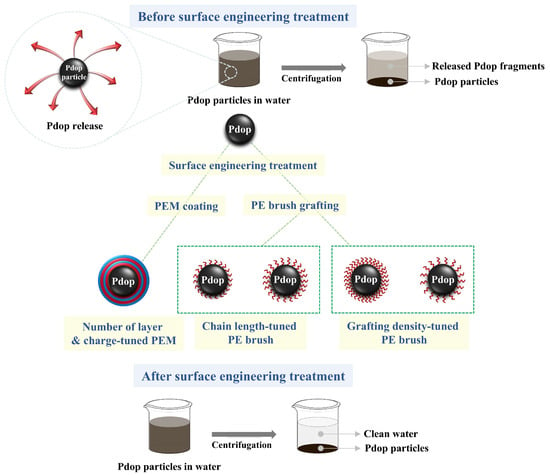
Figure 1
Open AccessArticle
Sago-Starch-Derived Sodium Starch Glycolate: An Effective Superdisintegrant to Enhance Formulation Performance
by
Okta Nama Putra, Ida Musfiroh, Derina Paramitasari, Karjawan Pudjianto, Emmy Hainida Khairul Ikram, Chaidir Chaidir and Muchtaridi Muchtaridi
Polymers 2025, 17(9), 1208; https://doi.org/10.3390/polym17091208 - 28 Apr 2025
Abstract
This study focused on optimizing sago-starch-derived sodium starch glycolate (SSG) as a superdisintegrant using a Response Surface Methodology (RSM). The aim was to enhance the formulation performance by achieving an optimal degree of substitution (DS) in the synthesis of SSG from sago starch
[...] Read more.
This study focused on optimizing sago-starch-derived sodium starch glycolate (SSG) as a superdisintegrant using a Response Surface Methodology (RSM). The aim was to enhance the formulation performance by achieving an optimal degree of substitution (DS) in the synthesis of SSG from sago starch and evaluating its performance in mefenamic acid tablet formulation. The SSG was synthesized using an organic solvent slurry method, which involves crosslinking starch with sodium trimetaphosphate (STMP) and substituting it with sodium monochloroacetate (SMCA). The reaction conditions, including the temperature, SMCA ratio, and reaction time, were optimized using the RSM. The optimal conditions were identified as a temperature range of 45–55 °C, an SMCA ratio of 0.75–1.5, and a reaction time of 120–240 min. The maximum predicted DS value was 0.24, with a validated DS value of 0.246 ± 0.021. The SSG-containing mefenamic acid formulation met USP standards and showed a superior disintegration time compared to the existing SSG. The optimized SSG derived from sago starch can be effectively used as a superdisintegrant in pharmaceutical formulations, offering a sustainable and economically viable alternative source of SSG. This contributes to the development of more effective drug delivery systems and promotes sustainable agriculture in Indonesia.
Full article
(This article belongs to the Special Issue Advanced Polymer Materials: Synthesis, Structure, and Properties)
►▼
Show Figures
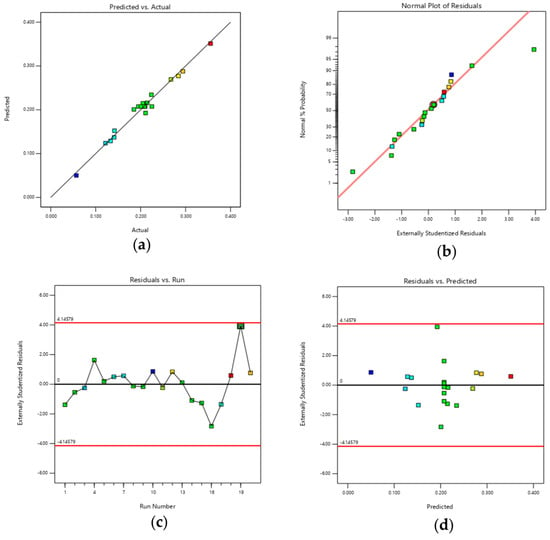
Figure 1
Open AccessArticle
Effect of Annealing on the Mechanical Properties of Composites of PLA Mixed with Mg and with HA
by
Carmen Sánchez González, Aurora Pérez Jiménez, Mauro Malvé and Cristina Díaz Jiménez
Polymers 2025, 17(9), 1207; https://doi.org/10.3390/polym17091207 - 28 Apr 2025
Abstract
Polylactic acid (PLA) is a bioresorbable and biocompatible material and is a promising alternative to the current materials used for permanent implants as it has osteosynthesis properties. However, this material has some drawbacks due to its low mechanical and thermal resistance after 3D
[...] Read more.
Polylactic acid (PLA) is a bioresorbable and biocompatible material and is a promising alternative to the current materials used for permanent implants as it has osteosynthesis properties. However, this material has some drawbacks due to its low mechanical and thermal resistance after 3D printing. Extensive research has been conducted to improve the properties of this material, for example, with the addition of other compounds, such as magnesium (Mg) or Hydroxyapatite (HA). These reinforced materials have been shown to reduce the internal stress of the matrix of PLA, improving the thermal, optical and structural properties of the material, even though the performance achieved is lower than needed to be implanted. In addition, although it is known that the addition of Mg or HA affects the mechanical performance of the material, mechanical properties have not been studied in the literature. Thus, the aim of this study is to research the effect of thermal post-processing based on annealing of composites made of PLA with Mg and PLA with HA, manufactured by fused filament fabrication, with the goal of finding an improvement in the mechanical properties of these materials. As a result, different designs of annealing processes have been studied with different reinforced materials and their mechanical properties have been compared, studying axial traction and compression, radial compression as well as flexibility, among others. The comparative results achieved show the relevance of the design of the annealing process for the improvement of the mechanical properties of these materials.
Full article
(This article belongs to the Special Issue Polymer/Ceramic Composites, 2nd Edition)
►▼
Show Figures

Figure 1
Open AccessArticle
A Multifunctional PEEK Composite Scaffold with Immunomodulatory, Angiogenic, and Osteogenic Properties for Enhanced Bone Regeneration
by
Mengen Zhao, Han Yang, Qianwen Yang, Chao Zhang, Jie Liu, Zhaoying Wu, Lijun Wang, Wei Zhang, Bing Wang and Wenliang Liu
Polymers 2025, 17(9), 1206; https://doi.org/10.3390/polym17091206 - 28 Apr 2025
Abstract
►▼
Show Figures
Polyetheretherketone (PEEK) is a widely used material in bone tissue engineering due to its favorable mechanical properties and radiolucency. However, its bioinert nature and lack of osteogenic activity restrict its ability to support effective bone regeneration. In this study, a novel APS-coated plasma-treated
[...] Read more.
Polyetheretherketone (PEEK) is a widely used material in bone tissue engineering due to its favorable mechanical properties and radiolucency. However, its bioinert nature and lack of osteogenic activity restrict its ability to support effective bone regeneration. In this study, a novel APS-coated plasma-treated sulfonated bioactive PEEK scaffold (APS/PSBPK) was developed to overcome these limitations. The scaffold integrates strontium-doped bioactive glass (SrBG) to enhance biocompatibility and osteogenic potential, while astragalus polysaccharide (APS) was incorporated via plasma cleaning to modulate immune responses and promote vascularization. In vitro studies demonstrated that the APS/PSBPK scaffold facilitates M2 macrophage polarization, reduces pro-inflammatory cytokines, and enhances the secretion of anti-inflammatory factors. It also promotes endothelial cell migration and angiogenesis while supporting the adhesion, proliferation, and osteogenic differentiation of rBMSCs. In vivo experiments revealed that the scaffold effectively regulates the immune microenvironment, promotes vascularization, and accelerates bone regeneration. Thus, the APS/PSBPK composite scaffold serves as a multifunctional biomaterial with significant potential for applications in bone repair and regeneration by combining immunomodulation, angiogenesis, and osteogenesis.
Full article

Graphical abstract
Open AccessArticle
Cellulose Nanocrystal and Polymer Composite Microspheres for Methylene Blue Adsorption
by
Yaxuan Deng, Zenghui Li, Rui Wang and Yue Shi
Polymers 2025, 17(9), 1205; https://doi.org/10.3390/polym17091205 - 28 Apr 2025
Abstract
In the present study, cellulose composite microspheres were synthesized based on the reversed-phase suspension method by introducing cellulose nanocrystals (CNCs) into polyacrylamide (PAM), followed by partial hydrolysis. Their adsorption performance for methylene blue (MB) dye in aqueous solution was investigated by varying the
[...] Read more.
In the present study, cellulose composite microspheres were synthesized based on the reversed-phase suspension method by introducing cellulose nanocrystals (CNCs) into polyacrylamide (PAM), followed by partial hydrolysis. Their adsorption performance for methylene blue (MB) dye in aqueous solution was investigated by varying the CNC content, pH value, and particle size of the microspheres, showing excellent removal efficiency and a good regeneration performance. In addition, the adsorption kinetics were determined in accordance with the quasi-secondary kinetic model, and the equilibrium isotherm performance followed the Langmuir adsorption model. This work provides a reliable experimental basis and solid theoretical foundation for the potential application of cellulose-based composite microspheres in the field of wastewater treatment. They are expected to represent a highly efficient adsorbent material and promote the development of related fields.
Full article
(This article belongs to the Section Polymer Composites and Nanocomposites)
►▼
Show Figures
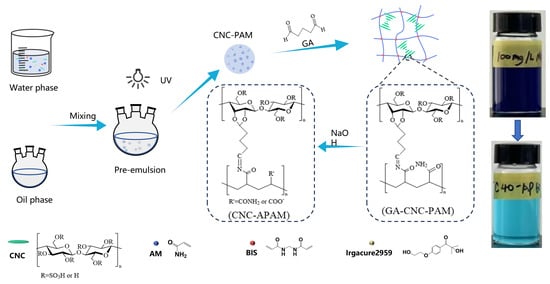
Graphical abstract
Open AccessArticle
Polyether- and Tertiary Amine-Modified Silicone Surfactants: Synthesis and Surface Performance Across pH Ranges
by
Yi Guo and Cheng Yao
Polymers 2025, 17(9), 1204; https://doi.org/10.3390/polym17091204 - 28 Apr 2025
Abstract
In this study, polymerized silicone surfactants were modified with polyether and tertiary amine groups with the aim of improving the surface performance. Various PSiEO/(PO)-OH(CH3) surfactants were synthesized and their structures and performance were characterized through 1H NMR, FTIR spectroscopy, static
[...] Read more.
In this study, polymerized silicone surfactants were modified with polyether and tertiary amine groups with the aim of improving the surface performance. Various PSiEO/(PO)-OH(CH3) surfactants were synthesized and their structures and performance were characterized through 1H NMR, FTIR spectroscopy, static surface tension, dynamic surface tension, zeta potential, and dynamic light scattering measurements. Subsequently, the modified silicones were incorporated as surfactants in aqueous solutions with different pH values. The surfactants with different hydrophobic/hydrophilic groups and end-capping groups exhibited different surface performances over a wide pH range. Thermodynamic parameters indicated that the micellization and adsorption of these surfactants were endothermic and spontaneous processes driven by entropy. The processes were hindered by increasing the solution pH and modification with hydrophobic groups. The aggregation behavior was significantly different under acidic, neutral, and basic aqueous conditions.
Full article
(This article belongs to the Section Polymer Applications)
►▼
Show Figures
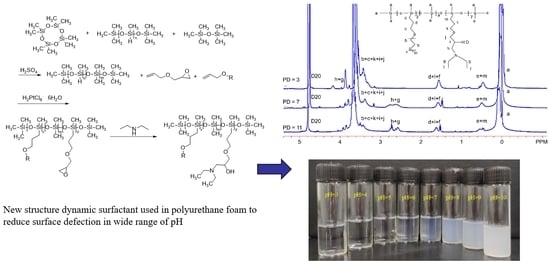
Graphical abstract
Open AccessArticle
A Silane Cross-Linked Cellulose-Based Separator for Long-Life Lithium Metal Batteries Application
by
Jinghao Cui, Hongliang Meng and Wei Li
Polymers 2025, 17(9), 1203; https://doi.org/10.3390/polym17091203 - 28 Apr 2025
Abstract
Cellulose-based separators with good electrolyte wettability and thermal stability have attracted extensive attention in the area of lithium metal battery (LMB) applications. However, their low mechanical strength in an electrolyte has seriously hindered their cycling performance of assembled LMB. Herein, a silane-crosslinked propionylated
[...] Read more.
Cellulose-based separators with good electrolyte wettability and thermal stability have attracted extensive attention in the area of lithium metal battery (LMB) applications. However, their low mechanical strength in an electrolyte has seriously hindered their cycling performance of assembled LMB. Herein, a silane-crosslinked propionylated cellulose-based separator (PBF-GPTMS) was prepared. The resulting separator exhibited high wet strength (18.7 MPa) and electrolyte uptake (312 wt%). Molecular simulation revealed that Young’s modulus of the silanized propionylated cellulose model was 14.64 GPa under EC/DMC/DEC conditions, which was higher than that of the propionylated cellulose model (6.89 GPa). In particular, the XPS spectra of the Li foil in the PBF-GPTMS-assembled battery after cycling suggested a lower amount of HF formed during cycling. Accordingly, the assembled Li/Separator/LiFePO4 cell showed excellent cycle performance with capacity retention of 94.5% after 300 cycles at 0.5 C and 93.6% after 160 cycles at 1 C, respectively. This idea would provide novel insights into the design of bio-based separators for long-life LMBs.
Full article
(This article belongs to the Special Issue Latest Technological Advancements in Polymers Used for Lithium-Ion Battery Applications)
►▼
Show Figures
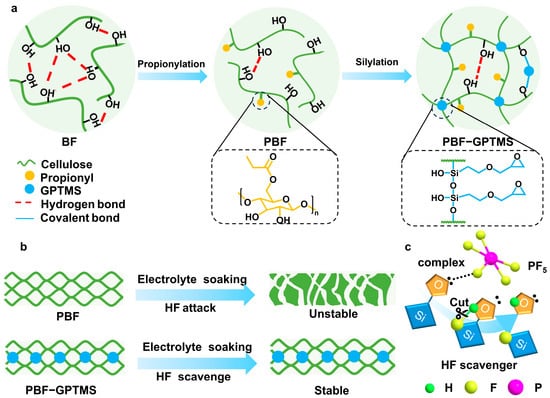
Figure 1
Open AccessArticle
Correlation Between Conditions of Polyaniline Interlayer Formation and the Structure and Performance of Thin-Film Composite Membranes for Nanofiltration Prepared via Interfacial Polymerization
by
Katsiaryna S. Burts, Tatiana V. Plisko, Anastasia V. Penkova, Bingbing Yuan, Sergey S. Ermakov and Alexandr V. Bildyukevich
Polymers 2025, 17(9), 1199; https://doi.org/10.3390/polym17091199 - 28 Apr 2025
Abstract
Correlations between conditions of the polyaniline (PANI) interlayer formation on the surface of a polysulfone (PSF) porous membrane substrate and the structure and performance of thin-film composite (TFC) membranes for nanofiltration with a polyamide (PA) selective layer prepared via interfacial polymerization (IP) were
[...] Read more.
Correlations between conditions of the polyaniline (PANI) interlayer formation on the surface of a polysulfone (PSF) porous membrane substrate and the structure and performance of thin-film composite (TFC) membranes for nanofiltration with a polyamide (PA) selective layer prepared via interfacial polymerization (IP) were studied. It was shown that application of the PANI layer significantly enhanced hydrophilicity (the water contact angle decreased from 55 ± 2° down to 26–49 ± 2°), decreased pore size and porosity, and increased the surface roughness of the selective layer surface of porous PSF/PANI membrane substrates due to the formation of bigger PANI globules, which affect the formation of the PA layer of TFC membranes via IP. It was shown that the application of the PANI intermediate layer yielded the formation of a thinner PA selective layer, a decline in surface roughness, and an increase in hydrophilicity (the water contact angle declined from 28 to <10°) and crosslinking degree of the selective layer of TFC NF membranes. The developed approach allows us to enhance the water permeation up to 45–64 L·m−2·h−1 at ΔP = 0.5 MPa and improve membrane selectivity (rejection coefficient of MgSO4—>99.99%; LiCl—5–25%; sulfadimetoxine—80–95%) and also ensure enhanced long-term operational stability of TFC nanofiltration membranes with a PANI interlayer. Moreover, Mg2+/Li+ separation factor values were found to increase to 37 and 58 for PANI-modified membranes compared to 9 and 8 for the reference NF-PSF membranes.
Full article
(This article belongs to the Special Issue Recent Trends in Polymer Membranes: Fabrication Technique, Characterization, Functionalization, and Applications in Environmental Science, 2nd Edition)
►▼
Show Figures
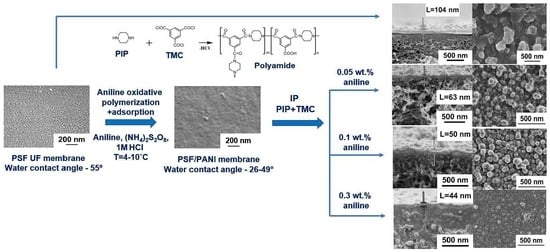
Graphical abstract
Open AccessArticle
The Thermal and Mechanical Performance of Leather Waste-Filled Bio-Based Thermoplastic Polyurethane Composites
by
Sara Naderizadeh, Anna Faggionato, Muhammad Umar Nazir, Rosario Mascolo, Mohammad Mahbubul Hassan, Emiliano Bilotti and James J. C. Busfield
Polymers 2025, 17(9), 1202; https://doi.org/10.3390/polym17091202 (registering DOI) - 27 Apr 2025
Abstract
The leather tanning industry generates a substantial quantity of solid waste, which, in part, is discarded in the environment in landfills or incinerated. One alternative end-of-life solution is to manufacture engineered materials by forming composites with a thermoplastic polymer/binder. In this work, leather
[...] Read more.
The leather tanning industry generates a substantial quantity of solid waste, which, in part, is discarded in the environment in landfills or incinerated. One alternative end-of-life solution is to manufacture engineered materials by forming composites with a thermoplastic polymer/binder. In this work, leather fibres (LFs) were melt-compounded into partially bio-based thermoplastic polyurethane (TPU), at leather fibre contents between 10 and 30% (TPU/LF), followed by compression moulding or 3D printing. The results showed that the incorporation of LF into the polymer matrix produced materials with a Young’s modulus comparable to that of leather. The melt extrusion processing influenced the polymer chain orientation and the resulting mechanical performance. The cyclic stress softening and abrasion resistance of the TPU/LF materials were evaluated to understand the potential of this material to be used in the footwear industry. The level of LF incorporation could be tailored to produce the specific targeted mechanical properties. This work demonstrates that LF could be used to produce materials with a high potential to be used in the fashion industry.
Full article
(This article belongs to the Special Issue Sustainable Development of Advanced Polymer Composites)
►▼
Show Figures
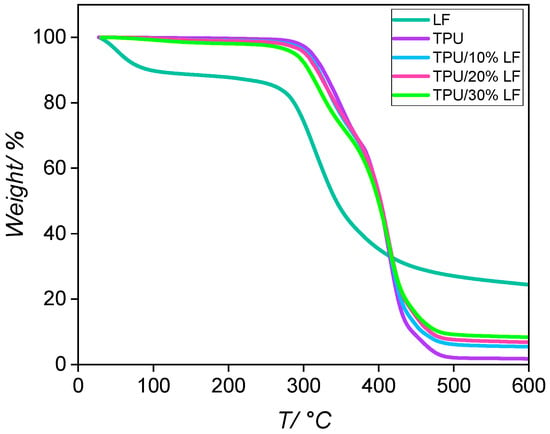
Figure 1
Open AccessArticle
Thin-Layer Drying Model and Antifungal Properties of Rubber Sheets Produced with Wood Vinegar as a Substitute for Formic and Acetic Acids
by
Wassachol Wattana, Putipong Lakachaiworakun, Natworapol Rachsiriwatcharabul, Visit Eakvanich, Panya Dangwilailux and Wachara Kalasee
Polymers 2025, 17(9), 1201; https://doi.org/10.3390/polym17091201 - 27 Apr 2025
Abstract
Currently, workers in the ribbed smoked sheet (RSS) rubber production industry face increasing health risks, primarily due to their direct involvement in converting fresh latex into raw rubber sheets. This process involves the manual addition of appropriately diluted commercial formic acid and acetic
[...] Read more.
Currently, workers in the ribbed smoked sheet (RSS) rubber production industry face increasing health risks, primarily due to their direct involvement in converting fresh latex into raw rubber sheets. This process involves the manual addition of appropriately diluted commercial formic acid and acetic acid to induce coagulation, resulting in a tofu-like consistency, which is subsequently processed into rubber sheets. Previous studies have indicated that the use of commercial formic and acetic acids poses significant health hazards to workers and contributes to environmental pollution. Therefore, this study explores the feasibility of replacing commercial formic and acetic acids with wood vinegar derived from para-rubber wood, bamboo, and eucalyptus in the RSS production process. Wood vinegar samples from the three biomass sources were analyzed for their organic compound compositions using gas chromatography and subsequently used as coagulants in the preparation of raw rubber sheets. The drying kinetics and antifungal properties of the resulting sheets were then evaluated. The results revealed that wood vinegar derived from para-rubber wood contained the highest concentration of acetic acid (41.34%), followed by bamboo (38.19%) and eucalyptus (31.25%). Rubber sheets coagulated with wood vinegar from para-rubber wood and bamboo exhibited drying kinetics comparable to those obtained using acetic acid, with the two-term exponential model providing the best fit. Conversely, rubber sheets coagulated with eucalyptus-derived wood vinegar, which had a relatively high concentration of phenolic derivatives (22.08%), followed drying behavior consistent with the Midilli et al. model, similar to sheets treated with formic acid. In terms of antifungal properties, five fungal genera—Aspergillus, Penicillium, Fusarium, Trichoderma, and Paecilomyces—were identified on the rubber sheets. Fungal growth was most pronounced in the control samples (untreated with wood vinegar), whereas samples treated with wood vinegar exhibited significantly reduced fungal colonization. These findings indicate that wood vinegar is effective in inhibiting fungal growth on the surface of rubber sheets and may serve as a safer and more environmentally friendly alternative to commercial acid coagulants.
Full article
(This article belongs to the Section Polymer Networks and Gels)
►▼
Show Figures
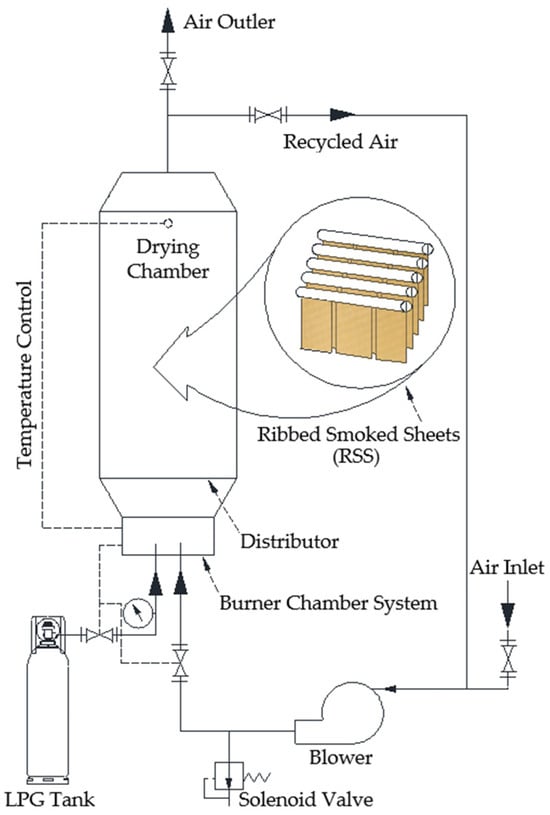
Figure 1
Open AccessArticle
Ammonium-Containing Methacrylic Polymer Brushes with Adjustable Hydrophilicity: Synthesis and Properties in Aqueous Solutions
by
Denis Kamorin, Alexander Simagin, Oleg Kazantsev, Maria Savinova, Maria Simonova, Denis Sadkov, Ildar Arifullin and Yaroslav Dolinov
Polymers 2025, 17(9), 1200; https://doi.org/10.3390/polym17091200 - 27 Apr 2025
Abstract
Reversible addition–fragmentation chain-transfer (RAFT) polymerization was used to synthesize novel thermoresponsive cationic molecular brushes with high yields—namely of copolymers of methoxyoligo(ethylene glycol) methacrylate, alkoxyoligo(ethylene glycol) methacrylate, and N-methacryloylaminopropyl-N,N-dimethyl-N-propylammonium bromide. Controlled polymerization yielded polymers with a molecular weight dispersity of ≤1.3 and conversions exceeding
[...] Read more.
Reversible addition–fragmentation chain-transfer (RAFT) polymerization was used to synthesize novel thermoresponsive cationic molecular brushes with high yields—namely of copolymers of methoxyoligo(ethylene glycol) methacrylate, alkoxyoligo(ethylene glycol) methacrylate, and N-methacryloylaminopropyl-N,N-dimethyl-N-propylammonium bromide. Controlled polymerization yielded polymers with a molecular weight dispersity of ≤1.3 and conversions exceeding 80%. The influence of the cationic molecular brushes’ composition on their solubility in water and organic solvents, interfacial tension at the water–oil interface, and aggregation behavior in aqueous solutions was investigated. For the first time, we report the design of thermoresponsive cationic molecular brushes combining an antibacterial potential and tunable hydrophilic–hydrophobic properties, enabling highly precise control over their LCST behavior (17–68 °C) through composition tuning. The solubilization capacity of the hydrophobic compounds of brush micelles in water increased with the hydrophobic comonomer content. These polymers exhibited interfacial activity, significantly reducing the water–oil interfacial tension, with critical micelle concentrations (CMCs) of 3–10 mg/L. It was shown that the amphiphilic properties of the copolymers in aqueous solutions can be easily tuned in a desired direction by varying the content of the comonomer units. The obtained data indicate the potential of the polymers as micellar nanocarriers for controlled drug delivery.
Full article
(This article belongs to the Section Polymer Chemistry)
►▼
Show Figures
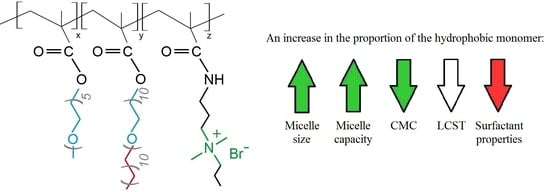
Graphical abstract
Open AccessArticle
N- and O- Doped Porous Carbon Nanosheets Prepared from Templating Methodology for Supercapacitors
by
Baoning Zhu, Jinghua Liu, Qijun Zhong, Yaru Wen, Qianqian Dong, Yuhao Li, Qianqian Jin and Yao Lu
Polymers 2025, 17(9), 1198; https://doi.org/10.3390/polym17091198 - 27 Apr 2025
Abstract
Heteroatom-doped biomass-derived porous carbon materials show promising applications as electrode components in energy storage technologies. In this investigation, we present a template-assisted pyrolysis procedure to fabricate nitrogen–oxygen dual-doped carbon materials. Firstly, the precursor and template initially polymerized to form a white jelly-like gel,
[...] Read more.
Heteroatom-doped biomass-derived porous carbon materials show promising applications as electrode components in energy storage technologies. In this investigation, we present a template-assisted pyrolysis procedure to fabricate nitrogen–oxygen dual-doped carbon materials. Firstly, the precursor and template initially polymerized to form a white jelly-like gel, which was freeze-dried to create a nanosheet-assembled structure. Subsequent high-temperature pyrolysis induced the formation of a porous structure with nanosheet morphology. The CMC-ZnK sample derived from the dual template of potassium citrate and zinc acetate pyrolyzed at 800 °C exhibits optimal electrochemical performance, delivering a specific capacitance of 271.4 F g−1 at 1 A g−1 in a three-electrode configuration, along with outstanding rate capability (90% retention, 244 F g−1 at 10 A g−1). The constructed supercapacitor demonstrated an energy density of 6.5 Wh kg−1 under a power density of 500 W kg−1. Furthermore, this study systematically investigated the performance variation mechanisms at different temperatures, revealing the relationship between structural composition and temperature in biomass materials.
Full article
(This article belongs to the Section Polymer Applications)
►▼
Show Figures

Figure 1
Open AccessArticle
Study of Mathematical Models Describing the Thermal Decomposition of Polymers Using Numerical Methods
by
Gaziza M. Zhumanazarova, Akmaral Zh. Sarsenbekova, Lyazzat K. Abulyaissova, Irina V. Figurinene, Rymgul K. Zhaslan, Almagul S. Makhmutova, Raissa K. Sotchenko, Gulzat M. Aikynbayeva and Jakub Hranicek
Polymers 2025, 17(9), 1197; https://doi.org/10.3390/polym17091197 - 27 Apr 2025
Abstract
This research presents the results of a combined numerical and experimental study of the thermal decomposition behavior of copolymers based on polypropylene glycol fumarate phthalate. The thermal decomposition of polymers plays a key role in various fields, such as waste recycling and energy
[...] Read more.
This research presents the results of a combined numerical and experimental study of the thermal decomposition behavior of copolymers based on polypropylene glycol fumarate phthalate. The thermal decomposition of polymers plays a key role in various fields, such as waste recycling and energy recovery, and in the development of new materials. The objective of this study is to model the degradation kinetics using thermogravimetric data, matrix-based numerical methods, and quantum chemical calculations. To solve the resulting systems of linear algebraic equations (SLAEs), matrix decomposition algorithms (QR, SVD, and Cholesky) were employed, which enabled the determination of activation energy values for the process. Comparison of the activation energy (Ea) results obtained using the decomposition method of Cholesky (207.21 kJ/mol), normal equations (205.22 kJ/mol), singular value decomposition (206.23 kJ/mol), and QR decomposition (206.23 kJ/mol) showed minor changes that were associated with the features of each method. Quantum chemical calculations based on density functional theory (DFT) at the B3LYP/6-31G(d) level were performed to analyze the molecular structure and interpret the IR spectra. This study establishes that the content of functional groups (ether and ester) and the type of chemical bonds exert critical influences on the decomposition mechanism and associated thermal parameters. The results confirm that the polymer’s structural architecture governs its thermal stability. The scientific novelty of this work lies in the integration of numerical approximation methods and quantum chemical analysis for investigating the thermal behavior of polymers. This approach is applied for the first time to copolymers of this composition and may be employed in the design of heat-resistant materials for agricultural and environmental applications.
Full article
(This article belongs to the Section Polymer Chemistry)
►▼
Show Figures
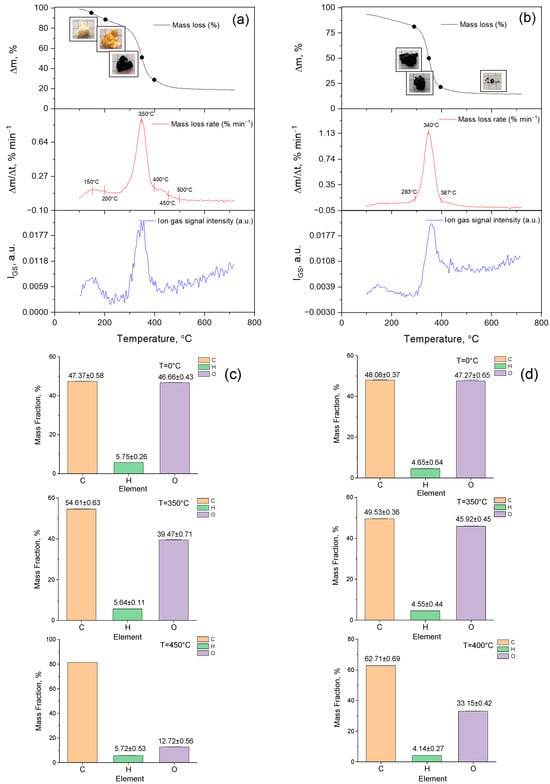
Figure 1
Open AccessReview
Recent Advances in the Applications and Studies of Polysaccharide-, Protein-, and Lipid-Based Delivery Systems in Enhancing the Bioavailability of Capsaicin—A Review
by
Xiang Qiu, Jing Xie and Jun Mei
Polymers 2025, 17(9), 1196; https://doi.org/10.3390/polym17091196 - 27 Apr 2025
Abstract
The primary active ingredient in capsicum is capsaicin. However, capsaicin bioavailability is low due to its restricted water solubility, and its potent spicy flavor will further restrict its use in food. This paper provides a complete overview of capsaicin. The biological activity of
[...] Read more.
The primary active ingredient in capsicum is capsaicin. However, capsaicin bioavailability is low due to its restricted water solubility, and its potent spicy flavor will further restrict its use in food. This paper provides a complete overview of capsaicin. The biological activity of capsaicin and its impacts on metabolism in vivo are described. To increase capsaicin stability and bioavailability, several capsaicin-based delivery systems, including liposomes, double emulsions, nanoparticle mesosystems, and multiple systems made of distinct hydrocolloids, are covered in this review. Finally, potential uses for food preservation are introduced in line with this. Numerous delivery systems introduced in this review have effectively solved the problems of poor water solubility and poor bioavailability of capsaicin. Although capsaicin has potential uses in food preservation, there is little research on its application in functional food development. More innovative capsaicin-based delivery methods should be established, and more capsaicin-based applications should be developed in the future.
Full article
(This article belongs to the Special Issue Biopolymeric Hydrolysates and Functional Polymers: Innovations in Food Applications and Shelf-Life Enhancement)
►▼
Show Figures
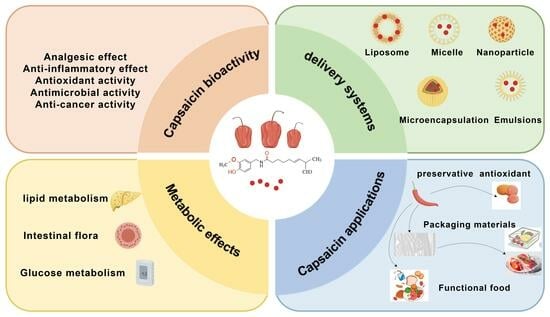
Graphical abstract
Open AccessArticle
Effect of Laser Processing Parameters on the Quality of Titanium Alloy Cladding Layer on Carbon Fiber-Reinforced Polymer
by
Jiayan Li, Xuan Su, Fenxiang Wang, Donghe Zhang, Yingke Wang, Haoran Song, Jie Xu and Bin Guo
Polymers 2025, 17(9), 1195; https://doi.org/10.3390/polym17091195 - 27 Apr 2025
Abstract
To address the insufficient bonding performance between TC4 (Ti-6Al-4V) coating and carbon fiber-reinforced thermoplastic (CFRP) matrices that limits engineering applications of composite structures, TC4 coatings were fabricated on CFRP polymer composites via laser cladding and analyzed using scanning electron microscopy (SEM) and transmission
[...] Read more.
To address the insufficient bonding performance between TC4 (Ti-6Al-4V) coating and carbon fiber-reinforced thermoplastic (CFRP) matrices that limits engineering applications of composite structures, TC4 coatings were fabricated on CFRP polymer composites via laser cladding and analyzed using scanning electron microscopy (SEM) and transmission electron microscopy (TEM) to examine the interface morphology, microstructure, and phase composition. The influence of laser processing parameters on the cladding quality was assessed based on the mechanical performance of the TC4 coating. The findings revealed that insufficient laser power (<230 W) or excessive scanning speed (>1.4 m/min) led to incomplete melting of TC4 powder, preventing the formation of intermetallic compound (IMC) layers. Conversely, excessive laser power (>270 W) or a low scanning speed (<1.0 m/min) caused thermal decomposition of the CFRP due to its limited thermal resistance, leading to interfacial defects such as cracks and pores. The interface between the CFRP and TC4 coating primarily comprised granular TiC and acicular α′ martensite, with minor TiS2 detected. Optimal mechanical performance was achieved at a laser power of 250 W and a scanning speed of 1.2 m/min, yielding a maximum interfacial shear strength of 18.5 MPa. These findings provide critical insights for enhancing the load-bearing capacity of TC4/CFRP aeronautical composites, enabling their reliable operation in extreme aerospace environments.
Full article
(This article belongs to the Special Issue Advanced Fiber-Reinforced Polymer Composites: Design, Manufacturing, Characterization, and Application)
►▼
Show Figures
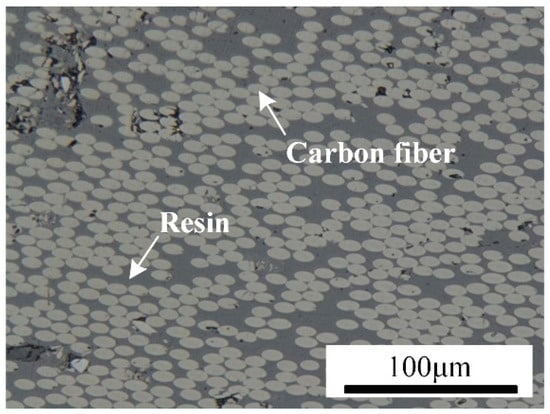
Figure 1
Open AccessArticle
Preparation of Chitooligosaccharides with Specific Sequence Arrangement and Their Effect on Inducing Salt Resistance in Wheat Seedlings
by
Jingwen Li, Anbang Li, Yupeng Li, Siqi Zhu, Lin Song, Song Liu, Ronge Xing and Kecheng Li
Polymers 2025, 17(9), 1194; https://doi.org/10.3390/polym17091194 - 27 Apr 2025
Abstract
Chitooligosaccharides (COS) exhibits good activity of inducing plant resistance, but the structure–activity relationship is still unclear. In this study, chitin oligosaccharides (CHOS) with a degree of polymerization (DP) of 2~6 were used as raw materials. Three deacetylases (NodB, VcCOD, and ArCE4A)
[...] Read more.
Chitooligosaccharides (COS) exhibits good activity of inducing plant resistance, but the structure–activity relationship is still unclear. In this study, chitin oligosaccharides (CHOS) with a degree of polymerization (DP) of 2~6 were used as raw materials. Three deacetylases (NodB, VcCOD, and ArCE4A) were employed to prepare three different sequence-arranged COSs, namely N-COS, C-COS, and A-COS, and their structures were characterized by infrared spectroscopy, high-performance liquid chromatography, and mass spectrometry. Further studies were conducted on inducing the plant salt resistance of the three different sequence-arranged COSs on wheat seedlings. The results showed a sequence-dependent effect of COS inducing plant salt resistance. Among them, A-COS exhibited the best activity. When sprayed at a concentration of 10 mg/L on wheat seedlings under salt stress for 3 days, the leaf length of the wheat seedlings sprayed with A-COS was recovered, and the wet mass and dry mass were recovered by 20.40% and 6.64%, respectively. Following the enhancement of proline accumulation, the malondialdehyde content decreased by 34.75%, and the Na+/K+ ratio also exhibited a significant reduction, thereby alleviating salt stress-induced damage. This study was the first to demonstrate the effect of COS with specific sequences on inducing plant salt resistance, providing a theoretical basis for the development of a new generation of efficient COS plant biostimulator.
Full article
(This article belongs to the Special Issue Preparation and Application of Cellulose-Based and Chitosan-Based Materials)
►▼
Show Figures
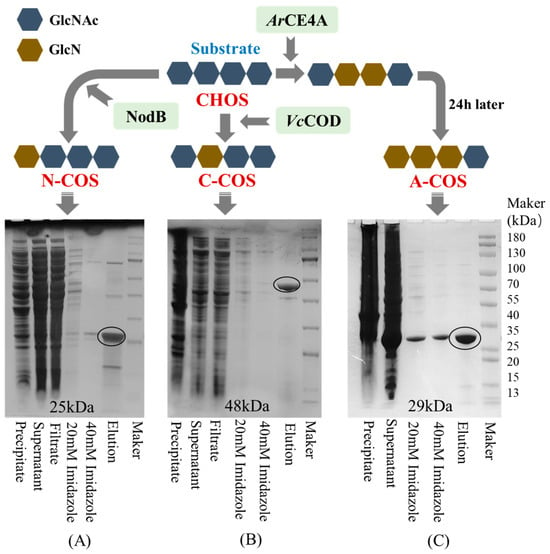
Figure 1
Open AccessReview
Review: Mean-Square Displacements of Simulated Polymers
by
George D. J. Phillies
Polymers 2025, 17(9), 1193; https://doi.org/10.3390/polym17091193 - 27 Apr 2025
Abstract
We review simulations of polymeric fluids that report mean-square displacements
We review simulations of polymeric fluids that report mean-square displacements
(This article belongs to the Section Polymer Physics and Theory)
►▼
Show Figures
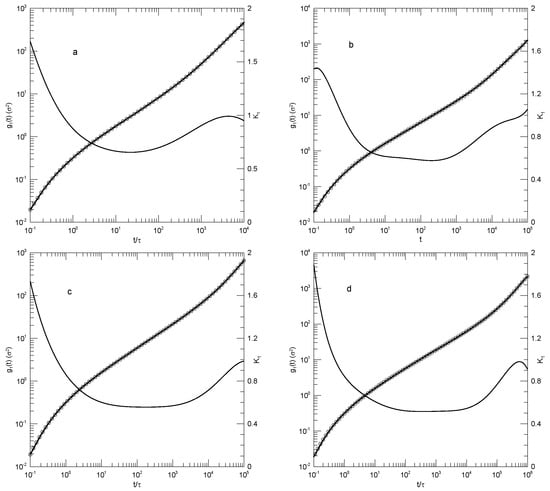
Figure 1

Journal Menu
► ▼ Journal Menu-
- Polymers Home
- Aims & Scope
- Editorial Board
- Reviewer Board
- Topical Advisory Panel
- Instructions for Authors
- Special Issues
- Topics
- Sections & Collections
- Article Processing Charge
- Indexing & Archiving
- Editor’s Choice Articles
- Most Cited & Viewed
- Journal Statistics
- Journal History
- Journal Awards
- Society Collaborations
- Conferences
- Editorial Office
Journal Browser
► ▼ Journal BrowserHighly Accessed Articles
Latest Books
E-Mail Alert
News
22 April 2025
MDPI Open Science Insights: Scientific Publishing Exchange with Nanyang Technological University School of Mechanical and Aerospace Engineering, 22 April 2025
MDPI Open Science Insights: Scientific Publishing Exchange with Nanyang Technological University School of Mechanical and Aerospace Engineering, 22 April 2025

15 April 2025
Meet Us at the 7th Polymer Processing and Application Symposium of the Chinese Chemical Society, 25–27 April 2025, Hefei, China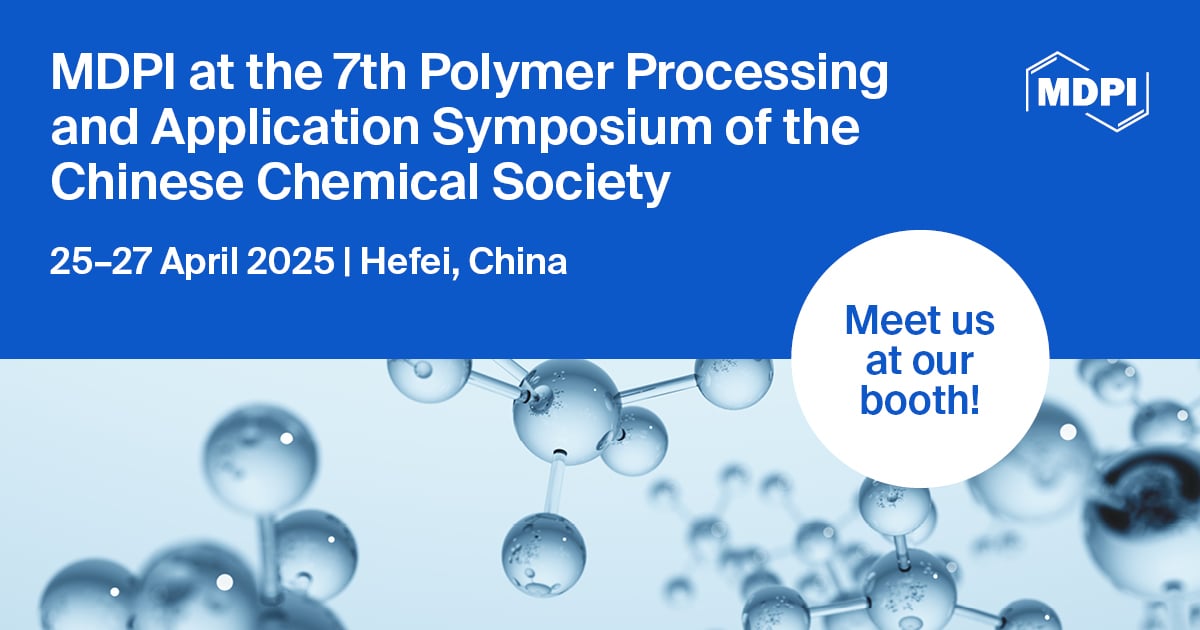
Meet Us at the 7th Polymer Processing and Application Symposium of the Chinese Chemical Society, 25–27 April 2025, Hefei, China

Topics
Topic in
Applied Sciences, Ceramics, Crystals, Membranes, Nanomaterials, Polymers
Broadband Dielectric Spectroscopy Fundamentals and Applications
Topic Editors: Natália T. Correia, Teresa Viciosa, Hermínio P. DiogoDeadline: 30 April 2025
Topic in
Chemistry, Materials, Molecules, Polymers, Pharmaceutics
Advanced Biomaterials: Processing and Applications
Topic Editors: Vincenzo Guarino, Roberto De Santis, Ugo D'AmoraDeadline: 31 May 2025
Topic in
Biomolecules, Energies, Foods, IJMS, Polymers
Microbes and Their Products for Sustainable Human Life
Topic Editors: Shashi Kant Bhatia, Ranjit GuravDeadline: 7 July 2025
Topic in
Fibers, J. Compos. Sci., Materials, Polymers
Advanced Carbon Fiber Reinforced Composite Materials, Volume II
Topic Editors: Michela Simoncini, Archimede ForcelleseDeadline: 31 July 2025

Conferences
Special Issues
Special Issue in
Polymers
Advances in Polymer-Based Organic Semiconductor Materials and Devices
Guest Editors: Qingqing Yang, Lihui LiuDeadline: 30 April 2025
Special Issue in
Polymers
Degradation of Plastics
Guest Editors: Saúl Vallejos Calzada, Miriam Trigo-López, Álvaro OrtegaDeadline: 30 April 2025
Special Issue in
Polymers
Application and Characterization of Polymer Composites
Guest Editor: Fei HanDeadline: 30 April 2025
Special Issue in
Polymers
Biodegradable Polymers in Sustainable and Biomedical Applications
Guest Editor: Suedina Maria de Lima SilvaDeadline: 30 April 2025
Topical Collections
Topical Collection in
Polymers
Polymerization and Kinetic Studies
Collection Editors: Shin-Ichi Yusa, Binyuan Liu
Topical Collection in
Polymers
Advances in Polymer Blends and Composites: Chemistry and Technology
Collection Editors: Suguna Perumal, Francesca Lionetto, Pietro Russo, Andrea Zille, Ana María Díez-Pascual
Topical Collection in
Polymers
Degradation and Stabilization of Polymer Systems: Recent Advances
Collection Editor: Giulio Malucelli









